Printing processes are essential for many industries and businesses. They are used to create everything from promotional materials to books and magazines. But, with all the different printing processes available, it can be difficult to know which one is best for your needs and budget. Additionally, there are a variety of factors that can affect the cost of printing and it's important to understand them before making a decision.
This article will provide an overview of the various printing processes used and discuss the factors that can influence their cost. Large format printing projects involve a variety of processes, from traditional printing methods to modern digital printing techniques. The type of process used will depend on the complexity of the project and the desired results. In this article, we'll look at the different printing processes used in large format printing, as well as the factors that affect the cost of these projects.
Traditional Printing Processes
Traditional printing processes include offset printing, letterpress printing, lithography, and gravure printing. Offset printing is the most common form of large format printing, and involves transferring an image onto paper or other materials using a plate and rollers.
Letterpress printing is similar to offset printing, but uses a raised surface to create an impression on the paper. Lithography is a very precise process that uses a chemical process to transfer an image onto a variety of materials. Lastly, gravure printing is a direct-to-substrate process that uses a rotary press to transfer an image directly onto a substrate.
Digital Printing Processes
Digital printing processes include inkjet printing and dye sublimation printing. Inkjet printing is a popular option for large format prints as it allows for full color images to be printed quickly and at a relatively low cost.
Dye sublimation printing involves transferring dye onto materials with heat and pressure. This type of printing is often used for fabric or textile prints, as well as full color images.
Factors Affecting Cost
The cost of large format printing projects can vary greatly depending on the materials used, the complexity of the design, and the size of the project. Materials used for large format prints include paper, vinyl, fabric, and other substrates. The complexity of the design affects the cost because it requires more time and effort to create a complicated design than it does for a simple one.
Lastly, the size of the project also affects cost since larger prints require more materials and more time to complete.
Comparison of Cost-Effectiveness
Different printing processes offer varying levels of cost-effectiveness depending on the type of project. For example, offset printing is often more cost-effective for large-scale projects such as billboards or signs as it requires less time and materials than digital methods. On the other hand, digital processes such as inkjet printing are often more cost-effective for smaller projects such as banners or flyers since they require less setup time and materials.
Key Takeaways
In conclusion, there are several different printing processes used in large format printing projects. Factors that affect the cost of these projects include the materials used, the complexity of the design, and the size of the project.
Different printing processes offer varying levels of cost-effectiveness depending on the type of project. Understanding these factors will help you make informed decisions when selecting a process for your large format print project.
Factors Affecting Cost
Large format printing projects come with a variety of costs, and the factors that affect these costs vary. Material choice, complexity, and size all play a role in determining the cost of a project.Material Choice
The type of material used in a large format printing project affects the cost.While some materials are cheaper than others, they may not be as durable or have the same quality finish. For example, paper is generally cheaper than vinyl or fabric, but it can tear easily and may not be able to withstand outdoor weather conditions. On the other hand, vinyl and fabric are more expensive, but they are more durable and can withstand outdoor elements.
Complexity
The complexity of the design also affects the cost of large format printing projects. Simple designs may not require as much time to create and print, while more complex designs require more time and effort.Complex designs also require more materials which can increase the overall cost.
Size
The size of the project is another factor that affects the cost of large format printing projects. Larger projects require more materials and take more time to create, which leads to higher costs. Additionally, some printers may have size restrictions on what they can print, which could affect the cost as well.Overview of Printing Processes Used
Large format printing can utilize a variety of different processes to achieve the desired result. Each printing process has its own advantages and disadvantages, and it is important to consider which one is most suitable for the job before starting a project.The following is an overview of the different printing processes used in large format printing.
Inkjet Printing:
Inkjet printing is one of the most common forms of large format printing. It is a non-contact printing process that uses inkjet heads to spray droplets of ink onto the substrate. Inkjet printers are capable of producing high-quality prints at a relatively low cost. The main disadvantage of inkjet printing is that it can be prone to fading over time.Laser Printing:
Laser printing is another popular form of large format printing.It is a contact printing process that uses a laser beam to transfer toner particles onto the substrate. Laser printers are capable of producing high-quality prints with fine details, but they are more expensive than inkjet printers.
Screen Printing:
Screen printing is a contact printing process that uses a mesh screen to transfer ink onto the substrate. Screen printing is often used for large-format projects because it is able to produce prints with a high level of detail and accuracy. However, it is a labor-intensive process and can be expensive compared to other processes.Digital Printing:
Digital printing is an increasingly popular form of large format printing.It is a non-contact printing process that uses digital files to produce prints on a variety of substrates. Digital printing is capable of producing high-quality prints at a relatively low cost, and it has the added benefit of being able to produce small quantities of prints quickly and easily.
Offset Printing:
Offset printing is a contact printing process that uses plates to transfer ink onto the substrate. Offset printing is often used for larger projects because it is able to produce prints with a high level of detail and accuracy. However, it is an expensive process and requires a longer turnaround time than other methods.Comparison of Printing Processes & Cost
Printing Processes & Cost ComparisonWhen deciding which printing process to use for a large format printing project, it's important to consider the associated costs.Different printing processes have different costs, and understanding these costs can help you decide which process is most cost-effective for the project you're working on. Here, we'll take a look at a comparison of the various printing processes and their associated costs. The first printing process we'll look at is screen printing. This process is typically used for large prints with solid colors, and it is one of the most cost-effective options available. It produces high-quality, vibrant prints that won't fade over time.
The downside of screen printing is that it can be time-consuming and labor-intensive, which can add to the overall cost of the project. The next printing process we'll consider is digital printing. This process is becoming increasingly popular, as it provides a quick and easy way to produce high-quality prints. Digital prints are also cost-effective and can be used for smaller projects. However, digital prints are not as vibrant or long-lasting as screen prints. Finally, there is offset printing, which is a more expensive option but can provide high-quality prints with vibrant colors.
Offset printing is often used for larger projects, as it offers the highest quality and longest-lasting prints. However, offset printing can be costly, so it's important to consider your budget when deciding which process to use. When comparing the costs of the different printing processes, it's important to consider all of the factors involved. Screen printing may be more cost-effective for smaller projects, while digital and offset printing may be better suited for larger projects. Ultimately, it's important to consider your budget, project size, and desired quality when deciding which process is most suitable for your project. In conclusion, large format printing is a complex process that requires careful consideration of a variety of factors.
Different printing processes offer different advantages and disadvantages, and the cost of a project can vary greatly depending on the materials used and the complexity of the project. By understanding the different printing processes available and the factors that affect cost, you can make an informed decision on which printing process is best for your project. By taking into account the materials used, complexity, and other factors, you can ensure that your large format printing project is completed to a high standard and within budget.
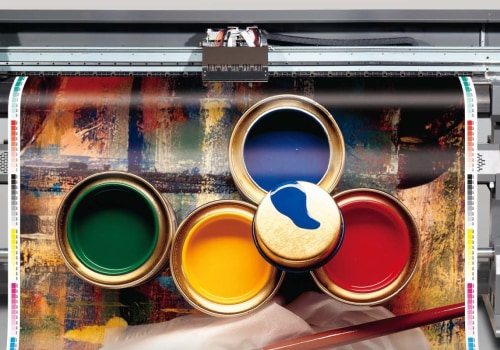





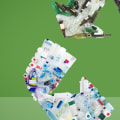
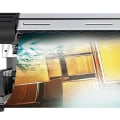
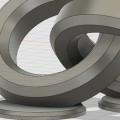
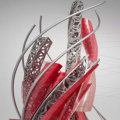

Leave Message